Ulf meets Kepp the moose dog and his owner Daniel to hear their extraordinary tale, and witness Kepp’s super-canine talents in a gruelling pursuit up a Swedish mountainside
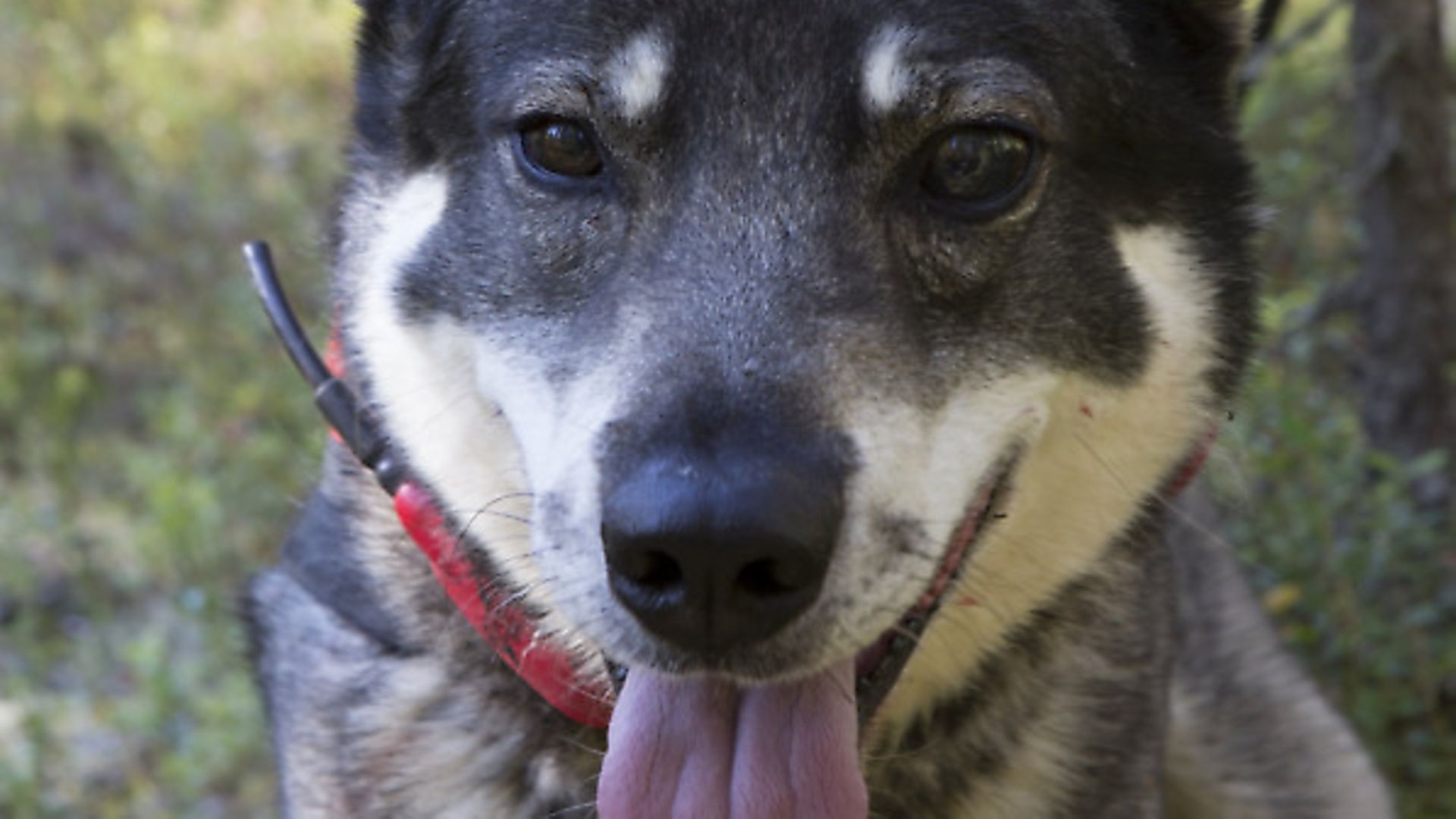 credit: Archant
credit: Archant
Seeing big game up-close is hard to beat, especially after a long, uncertain hunt. But what gets Scandinavian moose hunters really hooked may be the company of their tough moose dogs.
It was on an ill-fated summer evening a few years back when a not quite eight-month-old Swedish moose dog, named Kuumakallen Kepp, met his first moose. His owner, Daniel Holmgren, didn’t see what happened, but he will never forget the sight of his pup returning, bloody and terrified. Kepp’s first meeting with a moose cost him the vision in his left eye.
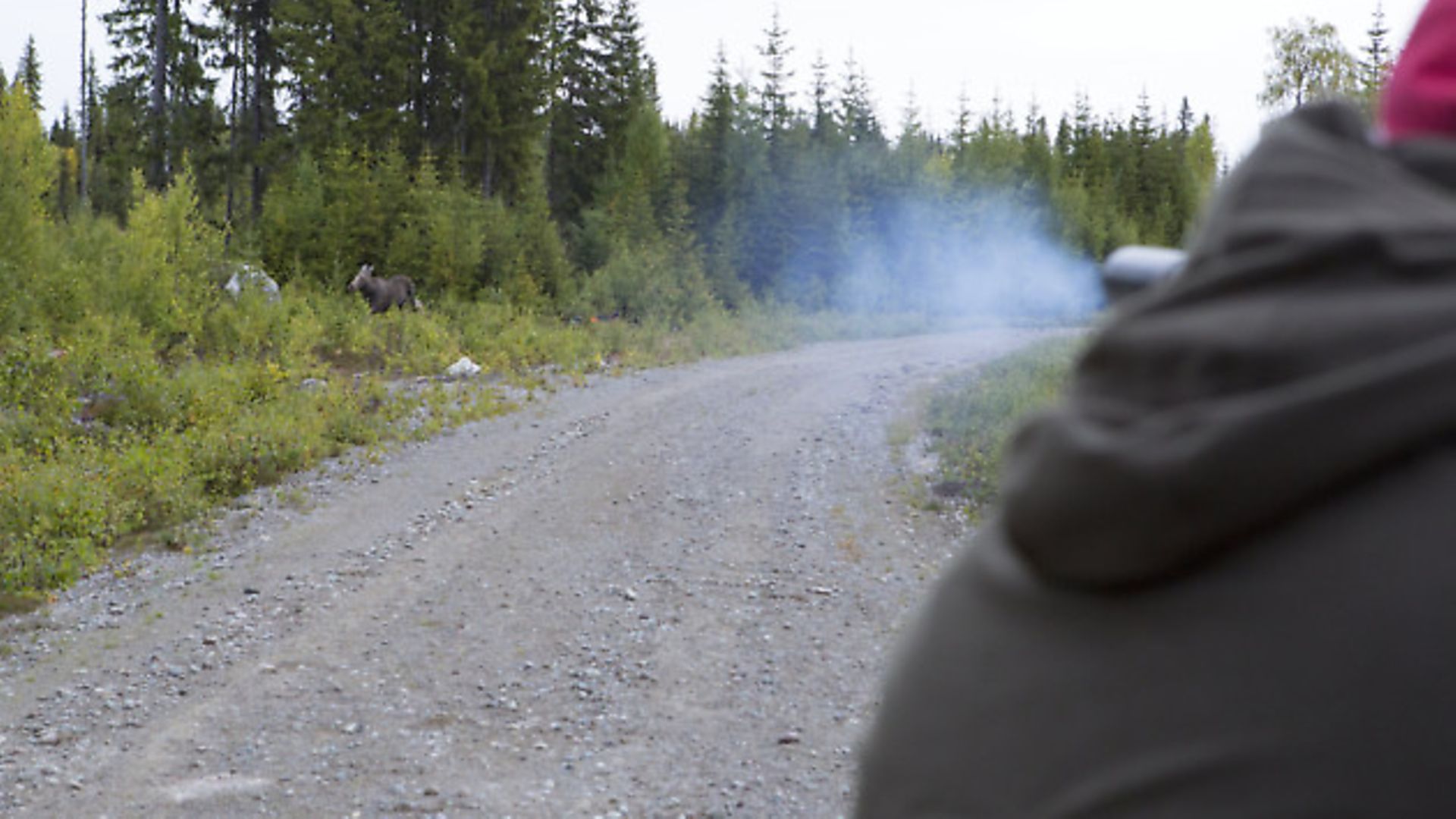 credit: Archant
credit: Archant
Daniel cursed his bad luck, for the pup was of great blood and, as summer turned into fall, he noticed Kepp was hesitating. Never a bark was heard. Young Kepp should have shown a passion for moose. Instead, he just watched.
Eventually, something happened to change things for the yound dog, when the blood of his forefathers could not be held back. It was not his way to skulk silently through the woods, gazing a one-eyed gaze at the looming beasts.
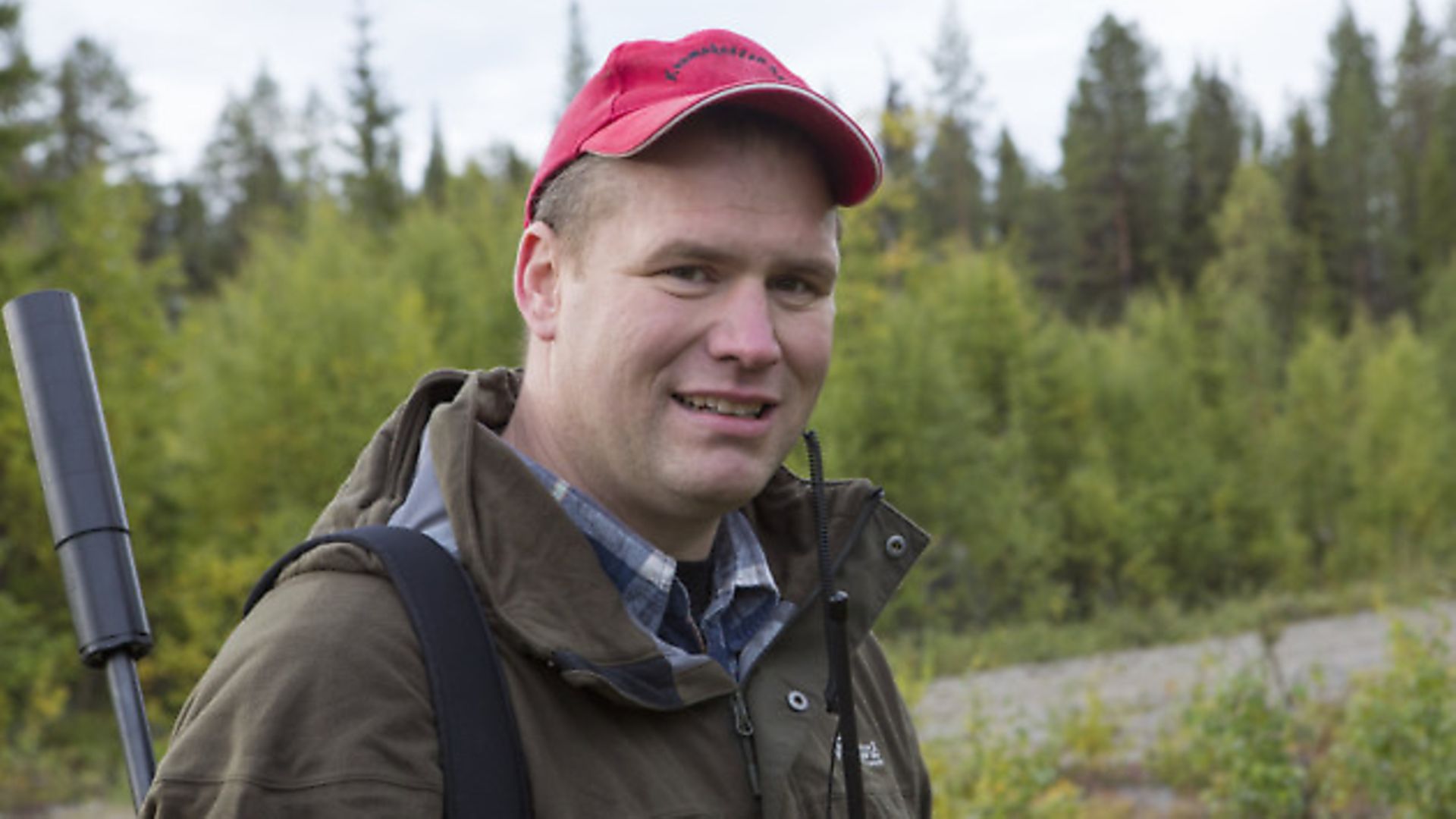 credit: Archant
credit: Archant
When Kepp turned at last, he turned with a vengeance. One late September day, he finally challenged a moose again – barking, feinting, avoiding fast kicks. The moose didn’t run and Kepp stayed with it. As a bullet broke the moose’s spine, the spell was broken too. The following day, Daniel shot Kepp’s second moose. On the third consecutive day of Kepp’s new life, they got a big bull.
And there started a dog’s career worthy of a song. Three Field Trials in a row, three splendid results, and young one-eyed Kepp was a Field Trial Champion with a rare cold purpose to his hunting.
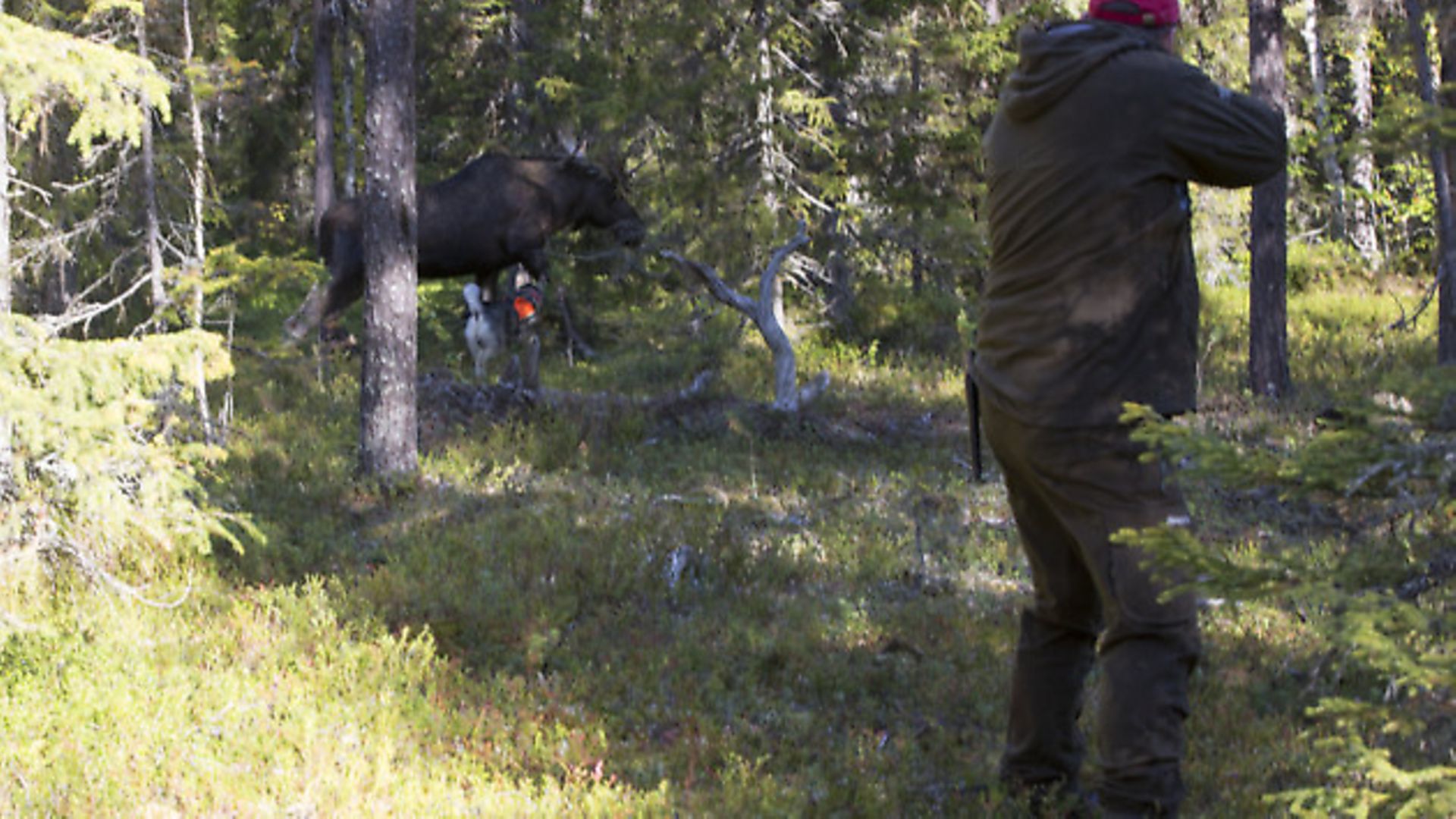 credit: Archant
credit: Archant
Second day
Many moose later, I’m standing with Daniel Holmgren on the slope of a wooded mountain in north central Sweden, looking out over endless miles of pine forests. It’s September, the second day of the moose season.
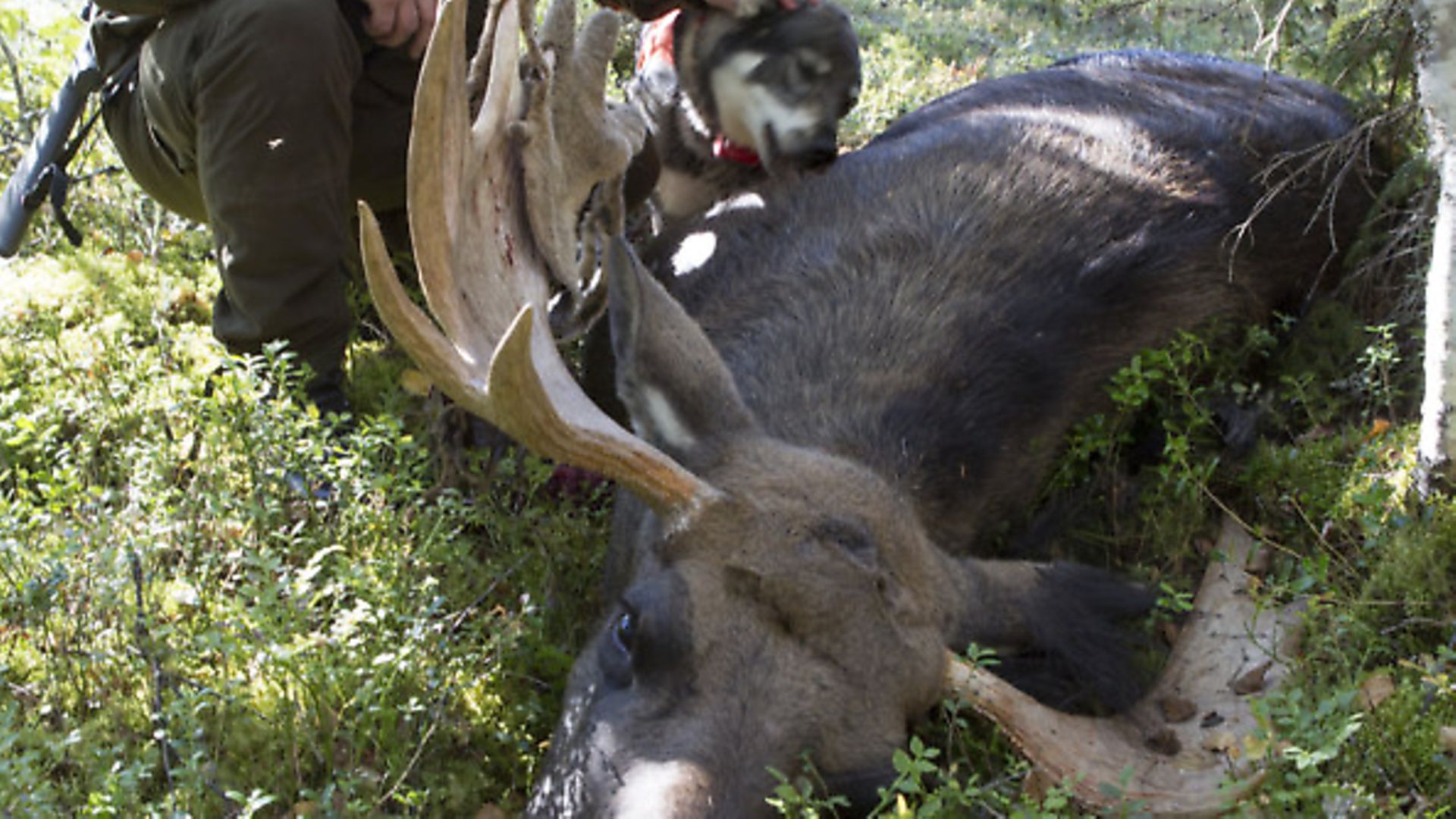 credit: Archant
credit: Archant
An hour or so before, Kepp set off on the fresh tracks of two adult moose. Daniel followed his progress on a GPS tracker. After about a mile, Kepp apparently caught up with the moose. His course stayed straight, but the speed doubled.
A moose dog has a tough job. It needs to cover a lot of ground to find the moose, then bay its quarry until the hunter gets close enough for a shot. But moose often run and need to be followed. They walk as often as they stand, and the dog can spend hours with them, all the time alert to attacks and lightning-fast kicks. It should know when to let a moose go and when to be stubborn. To be considered as excellent, it needs a certain magic touch to make a moose stand when most other dogs would have sent it running.
No dog can make all moose stand, but Kepp is known for a rare ability in that field. His weakness is more concerned with letting them go.
“If they run, I hope they run hard,” Daniel says. “That way, Kepp may let them go. Otherwise, we may be in for a long wait.”
In luck
Daniel’s best trick to avoid chasing Kepp through dark autumn nights is never to let him loose after noon as the dog is rather too stubborn.
The dog and moose are heading west. As the rest of Daniel’s small team of hunters are to the east of the mountain with two other dogs, there’s little chance of anyone getting a shot.
But a little while later, Daniel nods to the GPS screen: “I think we’re in luck.”
The dog marker on the screen is clearly returning along its own track. Then, even as we watch, it veers off. “He’s turning up against the wind,” Daniel says. “This should get interesting. He’s found moose in that exact spot before.”
Daniel listens. Kepp is a good mile away and on the far side of a gentle ridge, but the sound may carry. There’s just a very soft wind. Apart from the occasional rustling of aspen leaves and the croak of a distant raven, it has mostly been quiet since the last faraway black grouse stopped its morning lek.
Daniel is not only hoping Kepp finds a moose, but that he finds a challenging one. Their opening-day hunt yesterday was short. Kepp found a moose, a yearling female, within the first half hour. It set out on a straight line for the horizon, but it picked the wrong path. Daniel heard the dog, took the rifle off his shoulder, and saw the moose. It slid to a stop 40 metres away. As the team were in no hurry to finish their quota of two cows and one bull, they called it a day.
“I wouldn’t mind a chance at a bull today,” Daniel concludes.
A special talent
The odds of shooting bull moose to baying dogs in the early season is not great. Most moose, even the big bulls, would rather run than stand in September. But that’s where Kepp’s special talent lies. “Kepp is three and a half years old now,” Daniel says. “I’ve shot seven big bulls to him and three have been shot on opening weeks. So I say we do have a chance.”
Perhaps Kepp gained some special kind of knowledge in return for his eye, or perhaps he picked it up along the way... who knows, but there is something about this dog and his bulls.
And there it is. The faintest hint of a bark. It is still really only a recurring vibration, but we both recognise it. It is a language born in the chest of a big hard-muscled dog, and it is as old as these hills, ringing back from the days of moose-hide clothes and flint arrowheads. One-eyed Kepp is letting us know he is working his magic.
A few minutes later it seems the moose really has decided to stand. Daniel looks my way with a happy grin: “I think Kepp has something for us.” That proves to be true, but it also proves to be no easy moose.
Daniel almost gets a chance to close in on the baying Kepp. The moose decides to move and walks our way. But just as we see a first flash of antlers in a stand of young pines, the fickle wind suddenly chills our necks. As the moose goes crashing through the woods, we know one thing – it is a bull.
Miles and miles
For the next few hours that bull alternately stands and walks. And as moose often do when their suspicion is aroused, it mostly walks when Daniel is trying to approach. You think it shouldn’t know, but somehow it always does. It walks just fast enough to stay out of sight, then it speeds up, at which Kepp goes quiet. A little while later, distant barks tell us the moose has stopped again.
Miles are added to miles as the sun heats the woods. We are thirsty. So is Kepp probably, even if there is water in the streams. Once, we glimpse the moose across a small lake. We can’t judge the antlers, but it is big.
It goes halfway up the mountainside before it stands again. Foot-sore and sweaty, Daniel still likes this turn of events. “Moose on that hillside tend to go for a crossing not far from here,” he tells me. We put the long leg first and reposition accordingly. A while later, we are waiting quietly in the woods a few hundred metres from where Kepp is barking. If the moose moves our way, we stand a fair chance.
Full alert
Eventually Kepp goes quiet. When he resumes his barking, he’s much closer. The moose has given itself away – even if it stands now, it must have a mind to go this way. Before long, Kepp goes quiet again.
Daniel is on full alert as there may be a big bull moose on top of us at any moment. And then there is.
At the first shot, the moose goes down. Daniel runs closer and is rewarded with a clean view as the bull gets up and starts back. As the second bullet hits, it staggers over and this time it stays down.
“Did you see how big it was?!” Daniel had suspected Kepp was working with a 10-ender they’d seen before, but this moose was bigger. As the left antler is wrestled free of the ground, Daniel counts 17 ends.
Most Swedish moose hunters never get a bull that size. But Daniel is not most hunters, and Kepp is not most dogs.
They will remember this one for a long, long time, but they will keep looking for a bigger bull and a tougher hunt somewhere in the northern wilds. For that is what moose hunters do. Moose hunters and their moose dogs.
__________________
More from Ulf Lindroth:
Red foxes in Sweden
Beaver with hunter Erika Bergmark
Grey seal at the Bay of Bothnia
Wolves in Alberta, Canada